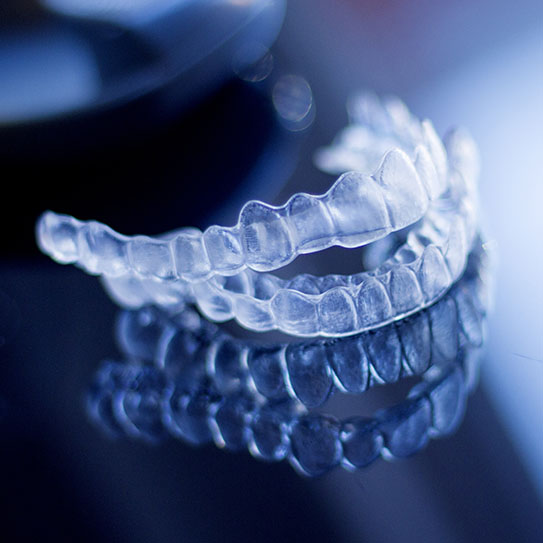Rewrite the content and keep the original meaning and format, and add 5 more H2, the content is “
Get Your Teeth Straightened Under the Radar
For many people, achieving a straight smile is a top priority, but the thought of wearing traditional metal braces can be unappealing. Fortunately, modern orthodontics offers a more discreet and comfortable solution: clear aligners. These custom-made trays gradually shift teeth into alignment without the need for metal brackets and wires. Whether you’re an adult looking for a professional solution or a teen wanting a subtle approach to orthodontic care, clear aligners provide an excellent option for straightening teeth.
How Clear Aligners Work
Clear aligners use advanced technology to reposition teeth over time. The process begins with a consultation, where a dentist or orthodontist takes digital impressions to create a series of customized trays. Each set of aligners is worn for about two weeks before moving on to the next set, gradually shifting teeth into the desired position. Treatment duration varies depending on the complexity of the case, but many patients achieve their new smile within 12 to 18 months.
Benefits of Choosing Clear Aligners
Clear aligners have become a popular orthodontic option because of their numerous advantages over traditional braces. Some of the key benefits include:
- Virtually Invisible: The transparent material makes aligners barely noticeable, allowing patients to straighten their teeth discreetly.
- Removable Convenience: Unlike traditional braces, clear aligners can be removed when eating, drinking, brushing, and flossing.
- More Comfortable: With no metal brackets or wires, aligners reduce the likelihood of mouth irritation and discomfort.
- Fewer Dental Visits: While braces require frequent adjustments, clear aligners only require occasional check-ins to monitor progress.
- Better Oral Hygiene: Being able to remove aligners makes it easier to maintain good oral hygiene throughout treatment.
Are Clear Aligners Right for You?
Clear aligners are an effective solution for many orthodontic concerns, but they may not be the best choice for everyone. They are most suitable for mild to moderate alignment issues, including:
- Overcrowding: When teeth are too close together and need space for proper alignment.
- Gaps Between Teeth: Aligners can close small gaps, improving the uniformity of your smile.
- Overbites and Underbites: Mild bite misalignments can be corrected with clear aligners.
- Relapse After Braces: If your teeth have shifted after previous orthodontic treatment, aligners can help reposition them.
However, severe bite misalignment or complex orthodontic cases may require traditional braces for the best results. A consultation with an orthodontist will determine whether clear aligners are the right choice for your specific needs.
What to Expect During Treatment
The clear aligner process is simple and designed for convenience. Here’s what you can expect during treatment:
- Initial Consultation: A dentist or orthodontist will assess your teeth, take digital impressions, and create a customized treatment plan.
- Receiving Your Aligners: Once your aligners are ready, you’ll receive a series of trays designed to gradually shift your teeth.
- Wearing Your Aligners: Each set of aligners should be worn for at least 22 hours per day, only removing them for meals and oral hygiene.
- Regular Check-Ups: Occasional visits to your dentist or orthodontist will ensure that your treatment is progressing as planned.
- Final Results: After completing the series of aligners, you’ll likely need to wear a retainer to maintain your straightened teeth.
Tips for Success with Clear Aligners
To get the most out of your clear aligner treatment, it’s important to follow these guidelines:
- Wear aligners for at least 22 hours per day to stay on track with your treatment timeline.
- Clean your aligners daily to prevent buildup and keep them looking clear.
- Brush and floss after eating before putting aligners back in to avoid trapping food particles.
- Avoid drinking sugary or colored beverages while wearing aligners to prevent staining.
- Keep your aligners in a protective case when not in use to prevent loss or damage.
Clear Aligners vs. Traditional Braces
Both clear aligners and traditional braces are effective orthodontic treatments, but they have key differences:
- Clear aligners are removable, while braces are fixed to the teeth.
- Braces are often better for severe misalignment, while aligners are best for mild to moderate cases.
- Clear aligners require commitment to wearing them as directed, whereas braces work continuously.
- Braces may require dietary restrictions, while aligners allow for normal eating habits when removed.
The right option depends on your individual orthodontic needs, lifestyle, and personal preference.
Achieve a Straighter Smile with Clear Aligners
If you’ve been considering orthodontic treatment but want an option that fits seamlessly into your lifestyle, clear aligners may be the perfect solution. With their discreet appearance, removable design, and comfortable fit, they provide an excellent alternative to traditional braces. If you’re ready to achieve a straighter, more confident smile, schedule a consultation to find out if clear aligners are the right choice for you.
The content on this blog is not intended to be a substitute for professional medical advice, diagnosis, or treatment. Always seek the advice of qualified health providers with questions you may have regarding medical conditions.
”
Source link
